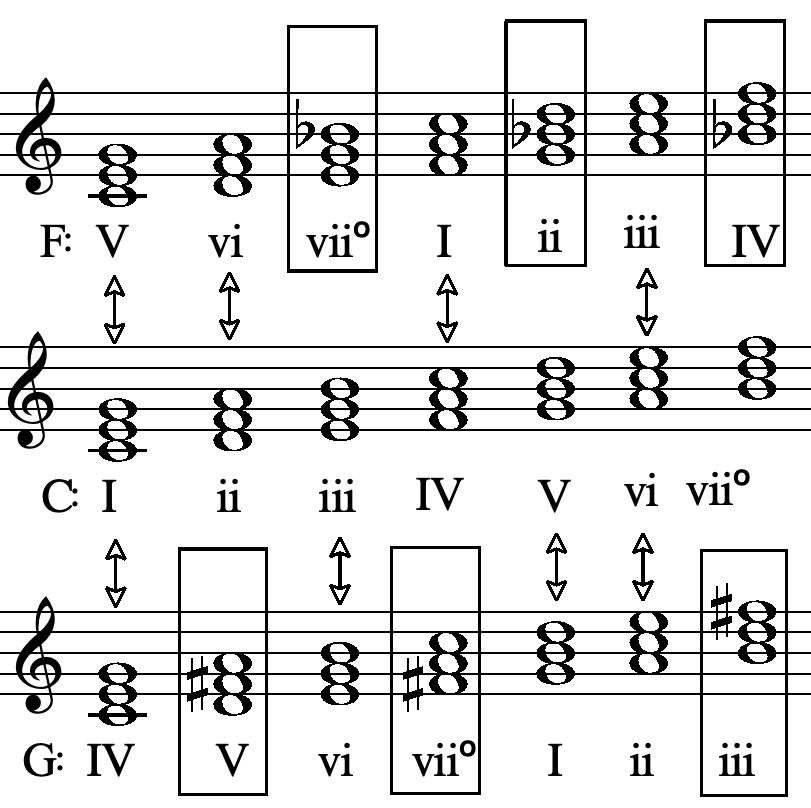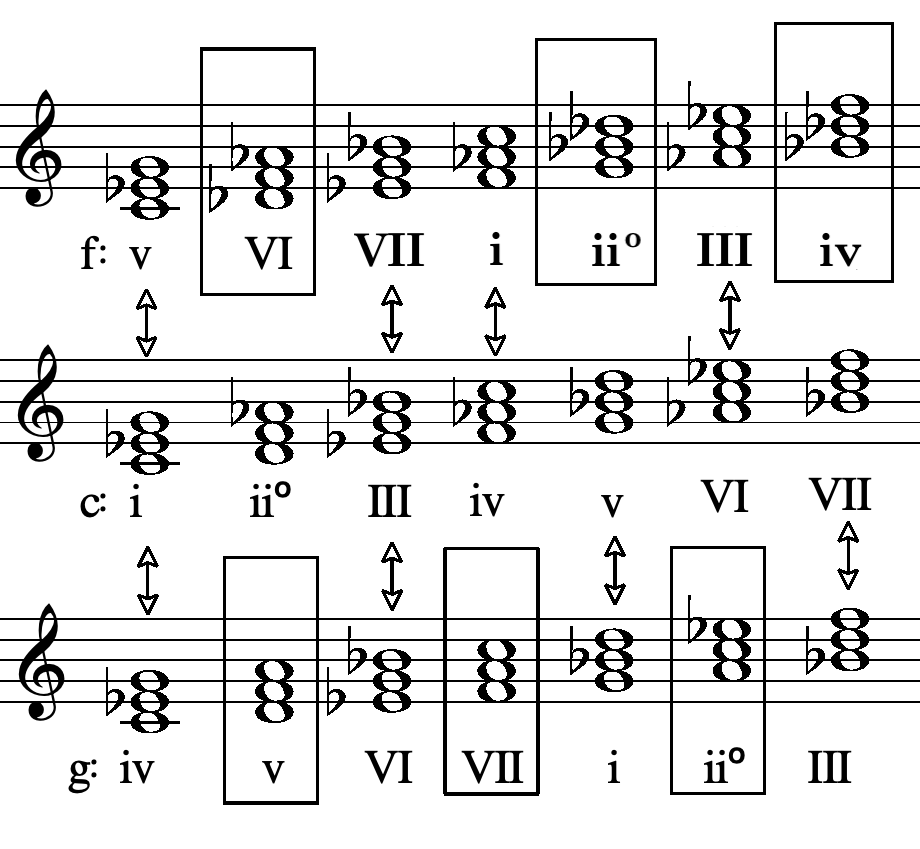Western Harmonic Practice II: Chromaticism and Extended Tonality
16 Tonal Modulation I: Up/Down to Adjacent Keys on the Circle of Fifths
Key Takeaways
This chapter delves into the techniques for modulation in music. We explore how modulation involves changing key or mode, and the strategic use of pivot chords to facilitate this transition. The discussion focuses on modulation within tonal harmony, examining methods like common chord modulation and transitions to relative or closely related keys, emphasizing the importance of establishing the new key convincingly.
- Understanding Modulation: Modulation involves shifting the tonal center or mode in a piece of music, requiring the new key to be convincingly established.
- Purpose of Modulation: Composers use modulation to create interest, build tension, and affect mood, often alongside changes in rhythm, tempo, and timbre.
- Common Chord Modulation: This technique employs chords shared between the original and destination keys, using them as pivot points for the transition.
- Modulation to Relative Keys: A seamless transition often made in music, where the scale degrees and chords of the relative major and minor keys are utilized for modulation.
- Utilizing the Circle of Fifths: Examining closely related keys on the Circle of Fifths.
- Intermediary / Passing Keys: For more interesting modulations, intermediate passing keys can be used as stepping stones to the final key.
What is Modulation?
Modulation, in general terms, refers to the transition or shift from one state to another. In music, modulation specifically denotes a change in mode (for example, from major to minor) and/or a shift in the tonal center from one pitch class to another. The root of the word “modulation” is derived from mode, underscoring its association with modal change. However, a mere change in mode doesn’t suffice as modulation. For a song or piece of music to truly modulate, the songwriter/composer must convincingly establish the new mode or key. This distinguishes modulation from merely borrowing elements from other modes or keys, such as temporary chord substitutions or modal interchange, both of which serve to add color and tension without fully committing to a key change.
Why do composers and songwriters modulate? The reasons include creating interest, introducing variation, building excitement and tension, shaping drama, and affecting mood shifts. Often, modulations are complemented by alterations in other musical parameters like rhythm, tempo, register, and timbre (instrumentation and orchestration). For this discussion, we will primarily focus on modulation within the context of tonal harmony.
Common Chord Modulation
Common chord (also “common tone”) modulation is a basic and frequently employed technique. As the name suggests, this method relies on shared chords or tones between the originating and destination keys. Musicians leverage this shared material as a transitional element, presenting the common chord (or tone) within the original key, then reinterpreting it in the new key, and subsequently progressing in the new tonal center. The term pivot chord is interchangeable with common chord and will be used henceforth.
As we learned in the chapter on cadences, key establishment is most effectively achieved through a cadence. After initiating the transition to the new key by means of a common chord, we then confirm it via a cadence, often a Deceptive cadence or an Imperfect Authentic cadence, allowing the music to continue in the new key before concluding the section, song, or piece.
Modulation to Relative Keys (Major or Minor)
Modulation to relative keys is a common and seamless transition in tonal music. When in a major key, one can modulate to its relative minor (e.g., from C major to A minor), and vice versa when starting in a minor key (e.g., from A minor to C major). It is presumed that the minor key is in its natural (descending) form, sharing all scale degrees and chords with its relative major. This ensures that any chord, on any scale degree, can function as a pivot chord for the sake of modulation. The process is straightforward, requiring only a mindful approach to the tendency/pivot tones in the minor mode.
Modulating to the Most Closely Related Keys
For our initial exploration, we’ll utilize chords in common to transition to keys most closely related to the original: those immediately neighboring the original key on the Circle of Fifths. Pivot (common) chords are identifiable by comparing the original key with its immediate neighbors on the Circle.
Major Mode

Having previously encountered this graphic in the chapter on cadences, here we use it to highlight shared pivot chords for modulation. By examining chords between adjacent keys, we can create a pivot chord chart for closely related keys in the major mode.
Major Mode: Pivot Chords
| DESTINATION | Pivot Chords... | |||
|---|---|---|---|---|
| UP by Fifth (+1) | I / I7 [IV / IV7] | iii / iii7 [vi / vi7] | V [I] | vi / vi7 [ii / ii7] |
| DOWN by Fifth (-1) | I [V] | ii / ii7 [vi / vi7] | IV / IV7 [I / I7] | vi / vi7 [iii / iii7] |
The pivot (common) chords in major as shared between an origin key and the two most closely related keys adjacent on the Circle of Fifths. Chords show in [ ] are scale degrees in the destination key.
Minor Mode

In the minor mode, we look at the Natural (Descending) minor form of the origin and neighboring keys. Based on the figure above, we can craft a corresponding pivot chord chart for the minor mode.
Minor Mode: Pivot Chords
| DESTINATION | Pivot Chords... | |||
|---|---|---|---|---|
| UP by Fifth (+1) | i / i7 [iv / iv7] | III / III7 [VI / VI7] | v / v7 [i / i7] | VII [III] |
| DOWN by Fifth (-1) | i / i7 [v / v7] | III / [VII] | iv / iv7 [i / i7] | VI / VI7 [III / III7] |
The pivot (common) chords in minor as shared between an origin key and the two most closely related keys adjacent on the Circle of Fifths. Chords shown in [ ] are scale degrees in the destination key.
Using Seventh Chords
The charts above indicate that seventh chords can also serve as pivot chords, provided the voice-leading is consistent and dissonances are contextually resolved.
Modulation I: Guidelines
We will assume that the starting/original key has already been well established and, for the sake of our SATB exercises, we will only practice the common/pivot chord modulation technique.
Modulation UP one Fifth (+1)
Here we may go to the keys located one fifth above the destination key (clockwise, one position on the Circle of Fifths). These also include the relative keys.
Modulation DOWN one Fifth (-1)
Here we may go to the keys located one fifth below the destination key (counterclockwise, one position on the Circle of Fifths). These also include the relative keys.
Provided that the original key is established, modulation is accomplished as follows:
- Identify an appropriate pivot chord, common to both keys.
- Label this chord (or chords) in both the original and new key, reinterpreting the chord in the new key.
- Establish, as soon as possible, the new key by means of a Deceptive or an Imperfect Authentic cadence.
- Continue in the new key, eventually closing the phrase with an Authentic cadence.
Using Intermediary / Passing keys
For more variety, localized intermediary (passing keys) enroute to the final destination key may be used. When doing this, it isn’t always necessary to establish each intermediate key by means of a firm cadence but it is usually important to sound at least chords from that key which are unique or distinct to that key, while still maintaining flow and direction toward the new key. The intermediary keys will often be closely related in the same direction as the final, destination key.
EXAMPLES: Modulation I
Taken from Arnold Schoenberg Theory of Harmony
If the score above is not displaying properly you may CLICK HERE to open it in a new window.
RWU EXERCISES
Major and Minor: Chord Connection with Non-Common Chord Tones and Freer Treatment of Dissonance
Using the template below, please do the following:
- Compose Twenty (20) phrases in SATB style with the following modulations:
- C major to A minor / Major Key to Relative Minor
- A minor to C major / Minor Key to Relative Major
- C major to G major / Major Key to Major Key Up +1
- C major to E minor / Major Key to Relative Minor Key Up +1
- A minor to G major / Minor Key to Relative Major Key Up +1
- A minor to E minor / Minor Key to Minor Key Up +1
- C major to F major / Major Key to Major Key Down -1
- C major to D minor / Major Key to Relative Minor Key Down -1
- A minor to F major / Minor Key to Relative Major Key Down -1
- A minor to D minor / Minor Key to Minor Key Down -1
When composing these progressions:
- Assume the starting (original) key has already been established.
- As quickly as possible, establish the new key by means of a Deceptive or Imperfect Authentic Cadence
- Continue in the new key for no more than 3 or 4 chords
- Conclude with an Authentic Cadence
- Be mindful of everything we have learned with best practices regarding voice leading
- Be mindful of your root progressions
- Label your pivot chord with a color of your choice in Noteflight
Exercise #1-2: (PW-1/270): Modulation Up/Down 1
(you must be logged into your Noteflight account to open the activity templates above)
Further Reading
- Schoenberg, Arnold: Theory of Harmony
- Schoenberg, Arnold: Structural Functions of Harmony
A change of key.
A group of pitches that are octave equivalent and enharmonically equivalent.
